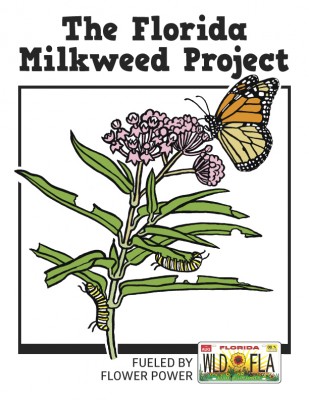Florida native plants for sustainable landscapes.
Visit PlantRealFlorida.org

The Florida Milkweed Project intends to:
We are interested in protecting the genetic diversity of our native milkweeds and promoting the proper informed use of native ecotype plants.
With funding support from the Florida Wildflower Foundation and the University of Florida and Florida Museum of Natural History, FANN has launched Phase 1 of the Florida Milkweed Project. We will be relying on advice and volunteers from our other state native plant partners, the Florida Native Plant Society (FNPS) and the Florida Wildflower Seed Co-op (WSPGA), as well as colleagues from the University of Florida (UF) Dept. of Entomology & Nematology and other qualified organizations which share our conservation ethic. Phase 1 focuses on the collection and distribution of native ecotype seed and related documentation, resulting in a draft Florida Milkweed Manual bringing together information on native milkweed habitats, flowering and fruiting times, seed collection and storage information, propagation and cultivation tip, etc.
SCHEDULE for Phase I: July 2015–March 2016
We are seeking native Asclepias populations on lands where seed collection can be readily permitted this summer/fall. Landowners or other persons aware of native Milkweed populations, as well as persons interested in volunteering to collect seed, are strongly encouraged to contact FANN.
FANN members are seeing a lot of demand for Florida native milkweed (Asclepias species). Because of the high demand for milkweed in general, and the lack of adequate native supply, the horticulture industry and gardeners are currently relying mostly on non-native sources, including A. curassavica – which causes some concerns regarding Monarch health. Both in the trade and at the retail point of sale, many plants and seeds are incorrectly identified as to species and nativity, due primarily to a lack of native milkweed knowledge. In addition, growers and gardeners have concerns about the use of pesticides on available milkweed plants and seeds.
The demand for milkweed will continue and increase due to popular interest in the imperiled Monarch butterfly. Devoted butterfly gardeners purchase plants just to feed their “babies.” But many otherwise well intended gardeners and landscape professionals revert to A. curassavica or other non-native milkweed (or no milkweed) if they can’t (1) find native milkweed or (2) successfully maintain native milkweed in a container, garden or landscape setting.
FANN growers are now producing milkweed using seed imported from outside the state, some collected native seed, and cuttings. Growers are struggling with challenges associated with producing plants in large quantities, controlling pests without affecting the health of Monarchs and other insects using the plants, and providing plants that meet consumer aesthetic expectations (how about some free Aphids with your plants?). FANN has formed an ad hoc Milkweed Production Committee chaired by Marc Godts, Green Isle Gardens Nursery, to help develop a knowledge base and best practices for nursery production of native ecotype Milkweed plants.
Wunderlin’s Florida Plant Atlas identifies 21 native Asclepias species. The native plant industry has limited seed collection and propagation experience with Asclepias humistrata, A. incarnata, A. perennis and A. tuberosa. Experience using the plants in garden or landscape settings is also very limited; generally only Pink Milkweed, A. incarnata, White Milkweed, A. perennis, and Butterfly Milkweed, A. tuberosa, have been used enough, at this point, to have some notion of their utility in ornamental landscapes. More horticultural experience and information is needed for these and other native Asclepias species.